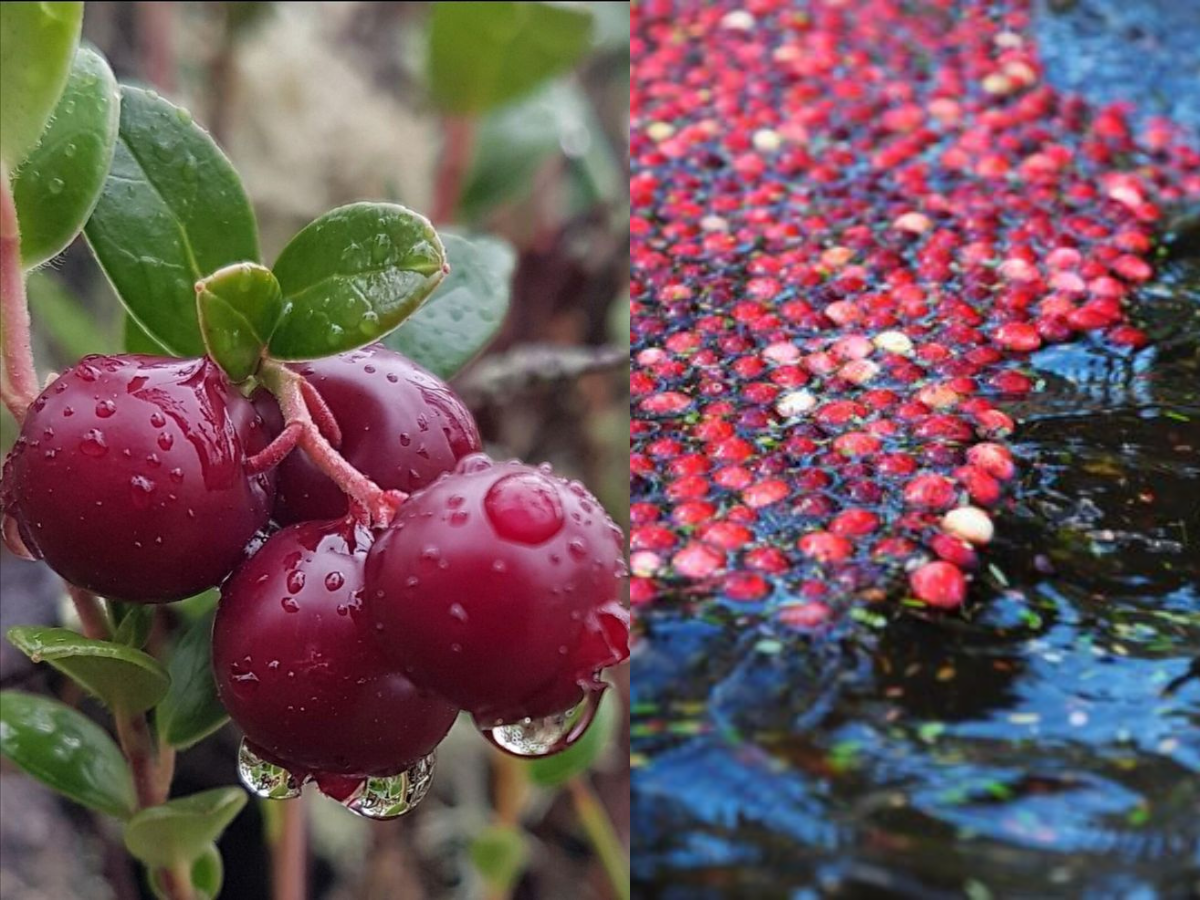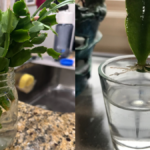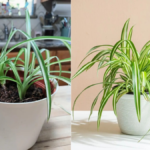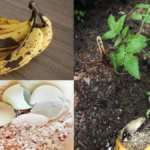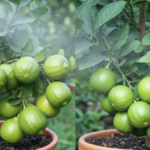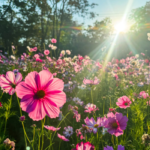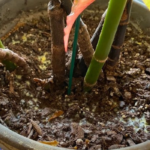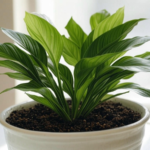How to grow cranberries in water? Yes, it’s possible! In this post, I’ll share my personal experience of growing cranberries using a water-based method, with simple steps, care tips, and everything you need to know for healthy cranberry plants.
I have been gardening for a few years now, and I always love trying new things. One day I was reading about how cranberries grow in bogs and wetlands, and I thought – can I grow cranberries in water at home? After researching and experimenting, I successfully grew them in containers using a water-supported method. Here, I’m sharing everything I learned in simple and clear language.
IN THIS ARTICLE
About the Cranberry Plant
| Feature | Details |
|---|---|
| Scientific Name | Vaccinium macrocarpon |
| Type | Small, trailing shrub |
| Native Area | North America |
| Light Requirement | Full Sun (6-8 hours daily) |
| Soil Type | Acidic and moist |
| Growing Style | Can be grown in containers with water |
Cranberries usually grow in wet and acidic soil, commonly found in natural bogs. That’s why they can be grown in water-based systems, especially in containers with proper drainage and moisture.
Quick Tips – How to Grow Cranberries in Water
- Use a wide container or tub for planting.
- Fill with acidic soil like peat moss mixed with sand.
- Keep the soil moist or half-submerged in water.
- Place the container in full sunlight.
- Water regularly with rainwater if possible.
- Use a low-acid fertilizer every few weeks.
- Be patient; cranberries grow slowly at first.
Step-by-Step Guide – How I Grew Cranberries in Water
1. Choose the Right Container
I used a large plastic tub around 15 inches deep. Make sure the container is wide, as cranberry plants spread sideways. I didn’t make holes at the bottom, so I could maintain a water level inside.
2. Make the Right Soil Mix
Cranberries love acidic soil. I mixed:
- 70% peat moss (acidic and holds moisture)
- 30% sand (for drainage and structure)
This soil mix helps the roots grow well and stay healthy in a moist condition.
3. Fill the Tub and Add Water
I filled the tub with the soil mix and added water until it was about 2-3 inches above the soil level. Then I let it sit for a day so the soil could absorb water properly. You can use rainwater or filtered water if your tap water is hard or alkaline.
4. Plant the Cranberry Seedlings
I got young cranberry plants (not seeds) from a nursery. Seeds take a long time to grow, so seedlings are better. I gently planted them into the wet soil, spacing them around 6 inches apart.
5. Sunlight is Important
I placed the tub in an area where it gets full sunlight for at least 6 hours a day. Without enough light, the plant won’t grow well or produce berries.
Watering Tips for Cranberries in Water
Since the tub had no drainage holes, I monitored the water level. It should not cover the whole plant – just keep the soil moist and slightly flooded. Once a week, I changed the water to keep it fresh and avoid mosquito breeding.
If you’re using a container with drainage, place it in a tray of water so the soil stays constantly moist from below.
Temperature and Humidity
Cranberries like cool to moderate temperatures. I grew them during the cooler months, as too much heat can damage the plant. In hot summers, I kept the container in partial shade during the afternoon.
Humidity also helps. I misted the plant once or twice a week during dry days.
Fertilizing
I used a diluted liquid fertilizer (low nitrogen, higher phosphorus and potassium) every 3 weeks. Too much nitrogen will grow leaves but no fruits. So be careful and go slow with fertilizing.
Pruning and Maintenance
Cranberries are low-maintenance, but they spread by runners. I trimmed some of the runners so that the plant could focus on root and berry growth. Also, removing any yellow or dry leaves keeps the plant healthy.
Harvest Time
Cranberries usually take 1.5 to 2 years to produce fruit. In my case, the first year was for growth, and by the second year, I saw small pink flowers turning into red berries during October. I picked them by hand once they turned dark red.
Common Problems and Solutions
| Problem | Solution |
|---|---|
| Yellow leaves | Check soil pH – it should be acidic (4.0 to 5.5) |
| No berries | Add phosphorus-rich fertilizer, ensure sunlight |
| Mold or rot | Don’t over-flood, change water weekly |
| Leaf spots | Remove infected leaves, avoid water on leaves |
FAQ – Cranberries grow in water
Can cranberries really grow in water at home?
Yes, cranberries can grow in water at home using containers. They don’t grow directly in water like lotus, but they love wet, acidic soil. You can create this condition in a tub or pot and keep the soil moist to mimic their natural habitat.
Can I grow cranberries from seeds in water?
You can try, but growing cranberries from seeds takes a long time, sometimes 2-3 years before they start fruiting. That’s why I recommend using young plants or cuttings from a nursery for faster and better results
What type of soil is best for cranberries in water?
Use a mixture of peat moss and sand. This mix keeps the soil acidic and helps retain moisture, which cranberries love. Avoid using regular garden soil because it may not be acidic enough.
Conclusion – Yes, You Can Grow Cranberries in Water
Growing cranberries in water may sound tricky, but with the right steps, it’s very much possible at home. I enjoyed the process and learned a lot about how plants adapt to their environment. If you love trying new things in gardening like I do, then growing cranberries in water is a fun and rewarding experience.
Read more Post
